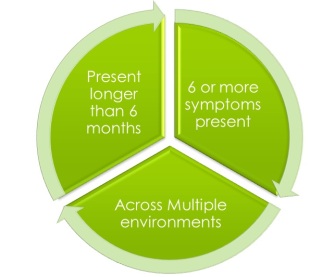The Diagnostic and Statistical Manual of Mental Disorders (DSM) is the handbook used by health care professionals throughout much of the world as the authoritative guide to the diagnosis of mental disorders. DSM contains descriptions, symptoms, and other criteria for diagnosing mental disorders.
Tying in with the publication of the new DSM-V in 2013, there has been a vital shift in the understanding of the nature, essence and definition of Attention Deficit Hyperactivity Disorder (ADHD).
No longer is ADHD stereotyped by the hyperactive little boy at the local supermarket, screaming and pulling items off the shelf. Or the little girl staring dreamingly out the window as her teacher seeks a response to an unheard question.
(Brown, 2013)
1. ADHD is a complex syndrome involving multiple symptoms. It can occur in 3 presentations: impulsive/hyperactive, inattentive or a combination of both.
2. A new understanding of ADHD is the notion that it is not a disorder of behaviour, but a developmental impairment of the management system of the brain- its executive functions. Executive Function (EF) is defined as: ‘The executive functions are a set of processes that all have to do with managing oneself and one’s resources in order to achieve a goal. It is an umbrella term for the neurologically-based skills involving mental control and self-regulation’. (Cooper-Kaan et. Al, 2008).
3. In children with ADHD, we find multiple combinations of impairments in the self-management system of the brain. Children may experience issues with activation- such as organising and getting started on work tasks, focus- staying focussed on one tasks or shifting focus between tasks, effort- particularly sustained effort and completing tasks on time, emotion- managing frustration and modulating emotion, memory- particularly working memory and short-term memory recall and lastly, action- such as impulsivity and regulating pace.
4. EF’s do not naturally operate under conscious control. Despite the strong desire of a person to change their problem patterns of behaviour, the dynamic chemistry of the brain overpowers.
5. ADHD is not a matter of insufficient willpower. It may seem rather paradoxical that a child can remain completely focused in one task, yet their attention wonders in another task. Indeed there is variation in attention and completion of a task from situation to situation.
6.Studies show (Kent et. Al, 2011 as discussed in Brown, 2013) that impairments of ADHD persists into adulthood and interferes with daily life even when environments are changed.
There are 3 sub-types of ADHD:
- Hyperactive-Impulsive Presentation
- Inattentive Presentation
- Combined Presentation
Understanding the symptoms helps educators to best cater for the needs of their students with ADHD (Shive, 2013):
Hyperactive-Impulsive Presentation:
- Fidgets or squirms excessively.
- Is unable to stay seated.
- Excessively runs, climbs or feels restless.
- Has difficulty remaining quiet.
- Is overactive.
- Talks excessively.
- Blurts out answers.
- Has trouble waiting turns.
- Frequently interrupts.
Inattentive Presentation:
- Misses details or makes careless mistakes.
- Has trouble paying attention.
- Has difficulty listening.
- Fails to follow through with tasks.
- Has trouble with organisation.
- Avoids difficult tasks.
- Loses things easily.
- Is often easily distracted.
- Is often forgetful.
Combined Presentation:
Combined Presentation presents as a combination of both Hyperactive-Impulsive Presentation and Inattentive Presentation
A diagnoses for ADHD involves multiple pieces to the puzzle and is usually reached when (Trail, 2013):
